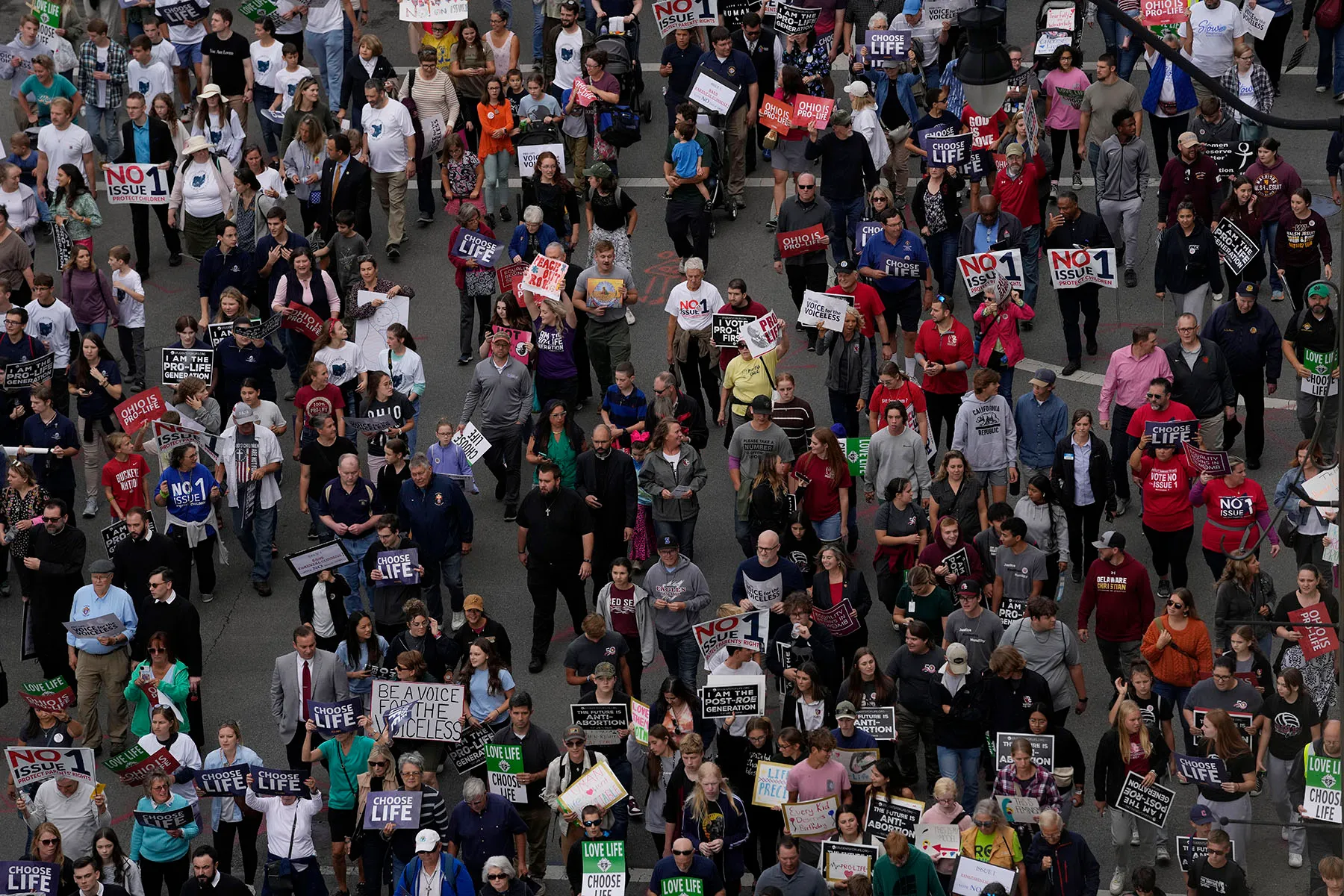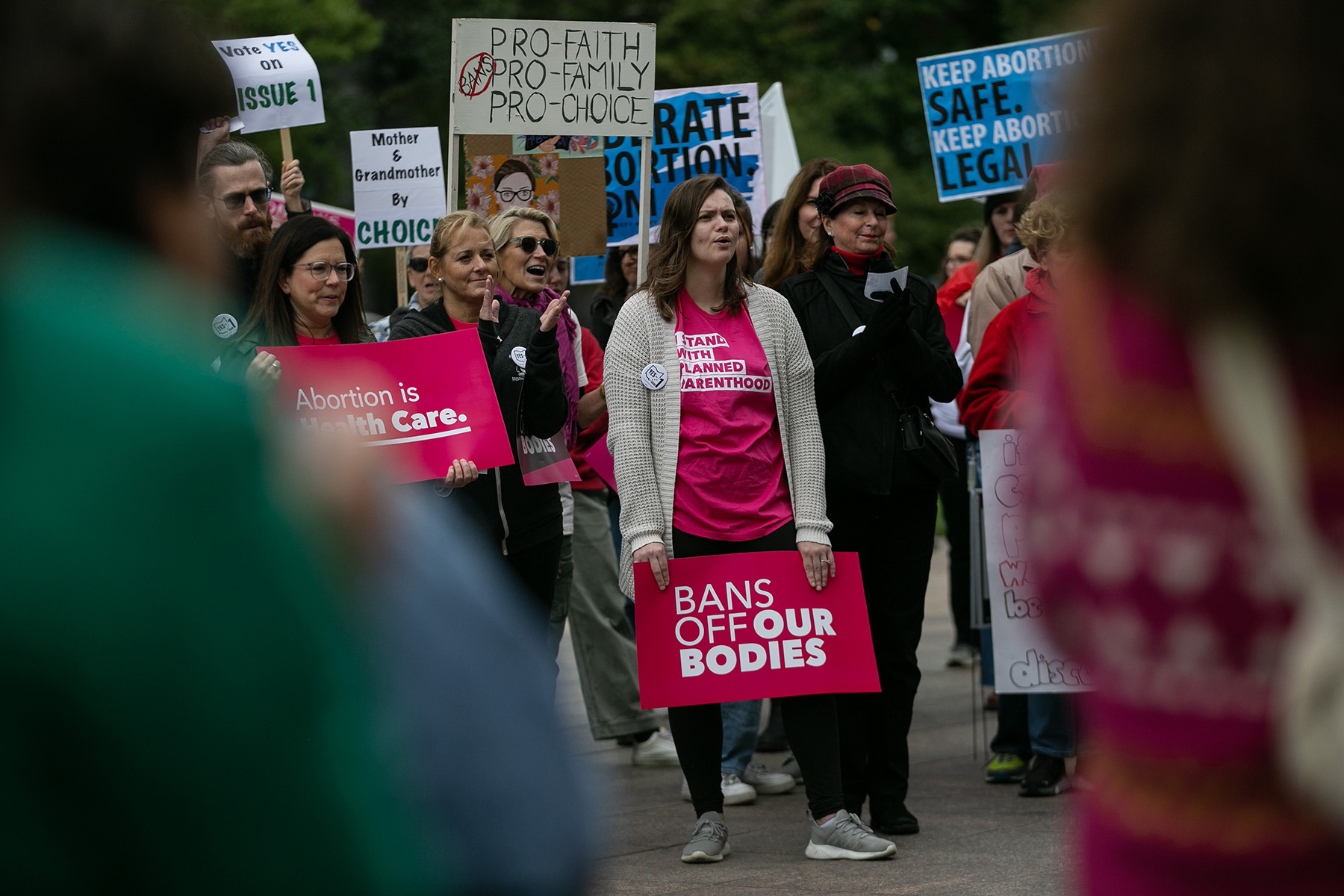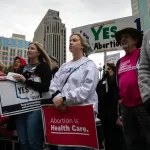Ohio voters passed the Issue 1 abortion ballot measure. See the results here, and sign up for our daily newsletter.
In Ohio, early voter turnout is robust, and ads funded by millions in outside spending are blanketing the state’s airwaves as groups supporting and opposed to an abortion ballot measure make their closing arguments.
Issue 1, if passed, would establish a right to abortion, contraception, fertility treatment and miscarriage care in Ohio’s Constitution. Ohio is the seventh state to vote directly on abortion since the Supreme Court overturned Roe v. Wade in June 2022 — and abortion rights advocates have won in every single state so far.
Ohio is the first Republican-leaning state to vote on enshrining abortion rights into its state constitution, and the outcome is seen as a key test of support ahead of efforts to pass similar measures around the country. The November 7 election comes three months after an August special election over a measure put on the ballot by Ohio Republicans that would have made it much harder to pass citizen-led ballot initiatives. Voters resoundingly rejected the measure by 14 points, striking a blow to Republicans and abortion opponents in the state while invigorating abortion rights advocates.
Issue 2, a measure that would legalize recreational marijuana in Ohio, is also on the ballot, and voter engagement is high so far. Over 380,000 Ohioans had voted early and nearly 250,000 received absentee ballots as of October 26, according to a Cleveland Plain Dealer analysis of early voting data, outpacing early turnout at the same point in the August special election. Early in-person voting began October 11, and voters could request absentee ballots starting September 22.
-
Issue 1 Results:
-
Issue 1 Results: Ohio votes to guarantee abortion rights in its state Constitution
The outcome of Issue 1 is drawing tens of millions of dollars in out-of-state spending ahead of the November election. Much of it is coming from deep-pocketed nonprofit groups not required to disclose their donors.
Susan B. Anthony Pro-Life America, a leading national anti-abortion group, blamed the “silence of the establishment and the business community in Ohio” for the August special election loss. Updated campaign finance reports filed October 26 show that, like in August, groups opposed to abortion are being outraised and outspent.
Ohioans United for Reproductive Rights reported bringing in $28 million in contributions since the reporting period that began August 9. The single largest contribution of $3.5 million came from the Open Society Policy Center, one of the groups in billionaire philanthropist and Democratic donor George Soros’ wide-ranging lobbying and advocacy network.
Arabella Advisors, a group that serves as a hub for left-of-center donors, is also involved. Three of the groups it manages, the Sixteen Thirty Fund, the Hopewell Fund and the North Fund, collectively gave over $4 million. The Fairness Project, an organization supporting the passage of progressive ballot measures, gave $2.2 million. Planned Parenthood Action Fund, the American Civil Liberties Union, and both groups’ state and local affiliates have also given millions of dollars to the effort.
Protect Women Ohio, the leading group spending money opposing Issue 1, reported raising $9.9 million, with $7.7 million of it coming from its affiliated action fund. The Concord Fund, one of many nonprofits linked to Federalist Society board Chairman Leonard Leo, gave over $6 million to Protect Women Ohio Action, while SBA Pro-Life America gave over $1.4 million. The Knights of Columbus, a Catholic organization, gave $1 million to Protect Women Ohio, and the Catholic Diocese of Columbus made a $300,000 contribution, records show.
Supporters of Issue 1 are also outspending their opponents on the airwaves and online. Data from AdImpact, a firm that tracks ad spending, showed $19.9 million in ad spending supporting Issue 1 and $13.4 million opposing it as of October 25. In August, pro-abortion-rights groups spent $4.6 million more on ads than their opponents.
Both sides are making their closing arguments to voters in their ads. Ohioans United for Reproductive Rights’ ads have highlighted the six-week abortion ban with no exceptions for rape or incest that Ohio Republican lawmakers passed in 2019, which has been blocked by a court since last year. In one recent ad, the group says Issue 1 would “get government out of the way” of private health care decisions and medical emergencies while keeping “sensible restrictions” on abortions later in pregnancy.
Protect Women Ohio put out a Spanish-language ad targeting Latinx voters in the state. And Republican Gov. Mike DeWine and Ohio First Lady Fran DeWine appeared in an ad from the group arguing that Issue 1 goes too far by allowing abortions later in pregnancy and could infringe on parental consent laws. State health data from 2022 showed nearly 90 percent of abortions in Ohio occurred before 12 weeks.

“I know Ohioans are divided on the issue of abortion,” DeWine says in the ad, “but whether you’re pro-life or pro-choice, Issue 1 is just not right for Ohio.”
DeWine, who signed the six-week abortion ban into law, indicated in a recent interview that if voters reject Issue 1, he would push to add rape and incest exceptions to Ohio’s six-week ban — though it’s not clear if those exceptions would garner enough support in the legislature to pass. Polling from the Public Research Religion Institute in 2022 found just 6 percent of Ohioans believe abortion should be illegal in all cases.
A recent poll from Baldwin-Wallace University and Survey USA conducted in early October found 58 percent of Ohio voters supporting Issue 1 and 34 percent opposing it. But supporters of Issue 1 claim Republicans have intentionally caused confusion for voters in the measure’s ballot summary language and in information on a taxpayer-funded website run by Ohio state Senate Republicans.
“The same politicians responsible for Ohio’s extreme abortion ban have tried to mislead voters with inaccurate ballot language,” Gabriel Mann, communications director for Ohioans United for Reproductive Rights, said in a recent statement. “We’re confident that Ohioans will see through this deception and vote Yes on Issue 1.”
The last day to request an absentee ballot was Tuesday, and early voting ends Sunday.








